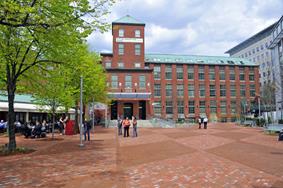Machinist’s Toolchest
Through the years I’ve done many projects at Artisan’s Asylum, but I felt like I’d neglected to take full advantage of the woodshop and really do some good old-fashioned cabinetry. This, coupled with my interest in machining, led to my desire to build a classic machinist’s toolchest. Whether I’ll actually end up using it as such remains to be seen. Still, it was a good learning experience, and I screwed up at every step of the way, which is a good indication that I pushed the boundaries of my skillset.
Read on →







